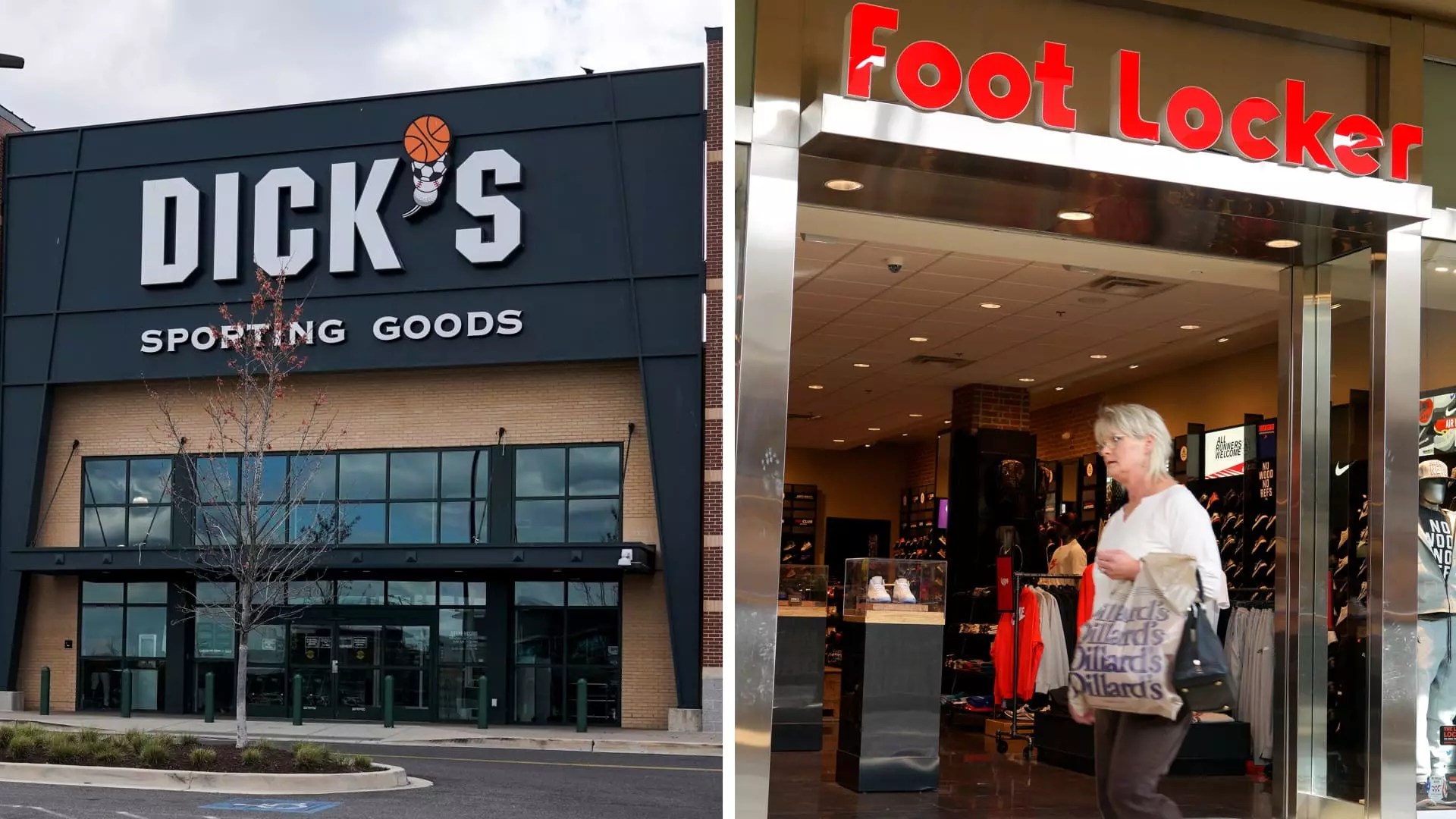The push for corporate consolidation often centers solely on the raw numbers—market share, revenue, and size—while neglecting the deeper implications for consumer choice and economic vitality. The proposed $2.4 billion acquisition of Foot Locker by Dick’s Sporting Goods exemplifies this dangerous oversight. While some observers dismiss it as a typical industry consolidation, focusing on the fact that combined entities may constitute around 15% of the sporting goods market, this narrow view grossly underestimates the insidious impacts such mergers can impose on innovation, pricing, and small business vitality.
The fundamental issue isn’t just about market concentration—it’s about the long-term consequences for competition itself. When two industry giants merge, they often claim they will become more efficient and better serve customers. However, this narrative conveniently ignores a crucial fact: increased market power inevitably translates into less competition, more bargaining leverage over suppliers, and the potential suppression of smaller retailers. Such dynamics threaten consumer freedom—not just today, but in generations to come.
The Risks of Monopolistic Tendencies in Retail
While defenders of the merger highlight that a 15% market share may not trigger immediate regulatory concerns, this perspective misses the forest for the trees. The real danger lies in how this consolidation could reshape the local retail landscape. Fewer players mean less diversity in product offerings, reduced innovation, and higher prices driven by diminished competitive pressure.
Particularly troubling is the potential for these behemoths to leverage their increased power to squeeze suppliers—many of whom are smaller, independent retailers—forcing them into unfavorable deals. This creates a ripple effect: independent stores find it harder to compete on price and product variety, leading to a potential monopolization at various levels of the supply chain. Ultimately, this results in a less vibrant market where consumer choice is sacrificed for the convenience—and profitability—of corporate giants.
The False Promise of Efficiency and Consumer Benefit
Corporate mergers are often sold to the public as a path to efficiency and better pricing for consumers. But this is a deceptive narrative that masks a zero-sum game: consumers may see short-term discounts or improved logistics, but these benefits are often offset by long-term disadvantages. Higher prices, reduced innovation, and fewer options become the norm as the retail ecosystem consolidates.
Furthermore, the argument that “market share below 30%” mitigates regulatory concern reveals a troubling complacency. History has shown that even smaller increases in market power can enable dominant players to engage in anti-competitive behaviors that harm consumers and small businesses alike. The focus should be less on arbitrary percentage thresholds and more on the actual competitive dynamics and potential for abuse of power.
Regulatory Failures and The Question of Political Will
The political climate significantly influences how mergers are scrutinized and ultimately approved. Under the Biden administration, regulatory agencies have adopted a more aggressive stance, carefully examining deals that threaten market competition. Conversely, previous signs under the Trump administration suggested a bias toward approving larger mergers, under the assumption that bigger entities foster economic growth and efficiency.
Yet, in the case of retail and consumer goods, the proof often indicates the contrary: consumers pay more, innovation slows, and the market becomes less resilient. The skepticism by critics like Elizabeth Warren underscores the hollow nature of these mergers—they are less about serving consumer interests and more about consolidating power to the detriment of fair competition. It is a test of political will whether regulators will prioritize consumer freedom and market integrity over corporate profits.
The Broader Economic and Social Harm
Beyond the immediate concerns of pricing and competition, the merger threatens to exacerbate inequalities that are already plaguing American consumers. As prices for essentials like footwear climb due to reduced competition, families—especially those already feeling economic strain—face further hardships. The temptation for large corporations to engage in anti-competitive practices increases when market pressures are alleviated through mergers, effectively turning the market into a playground for corporate monopoly.
This consolidation ultimately destroys the spirit of entrepreneurial vitality that once thrived in local retail communities. When power accrues in the hands of a few dominant players, innovation and local entrepreneurship are stifled. The ability of small, independent stores to survive and flourish diminishes, leading to a homogenized retail landscape devoid of the diversity that fuels consumer choice and economic resilience.
Dismissing this merger as a routine business move is a shortsighted mistake. It ignores the long-term consequences—less choice, higher prices, and the erosion of consumer and small business independence. This is not a battle over market share but a fundamental contest over consumer liberty and economic fairness. Any regulatory approval that ignores these broader implications is a betrayal of the very principles that sustain a dynamic, competitive economy.


Leave a Reply